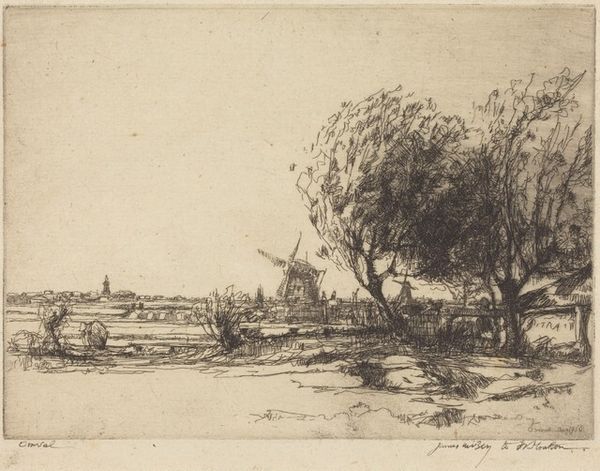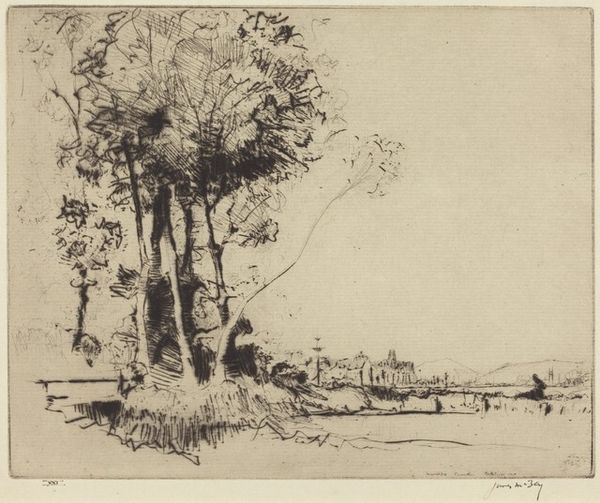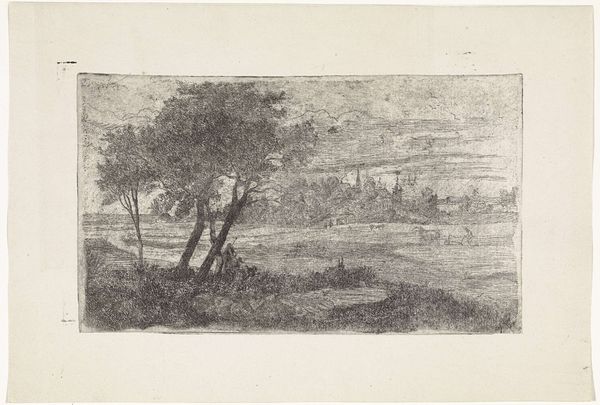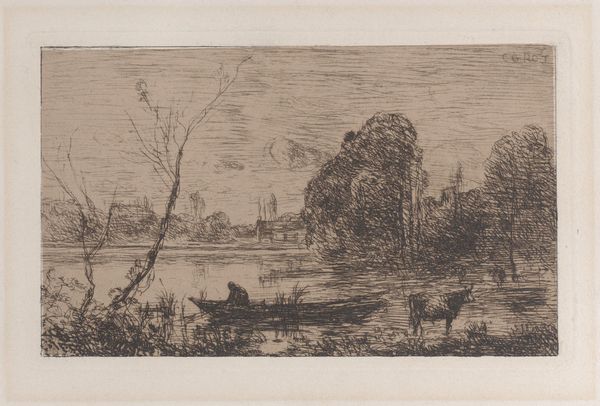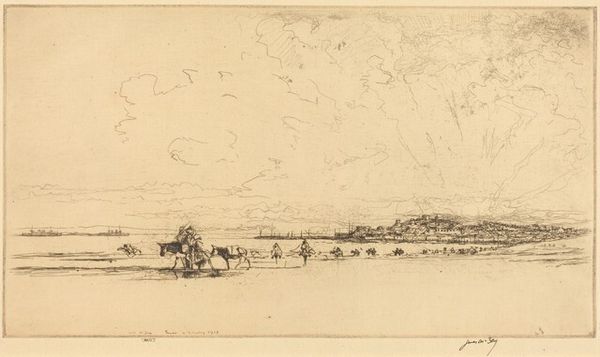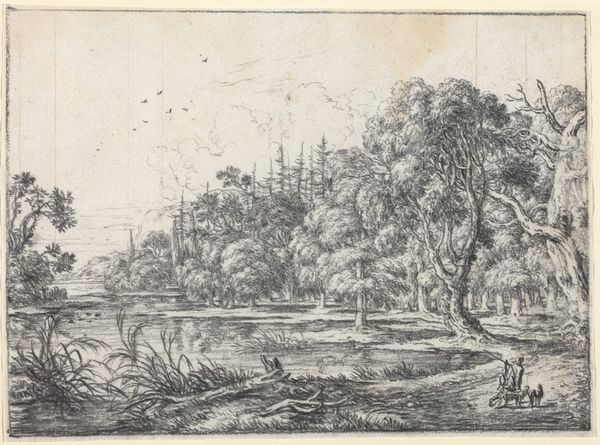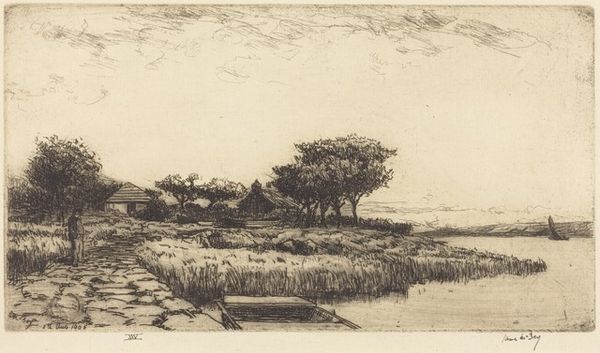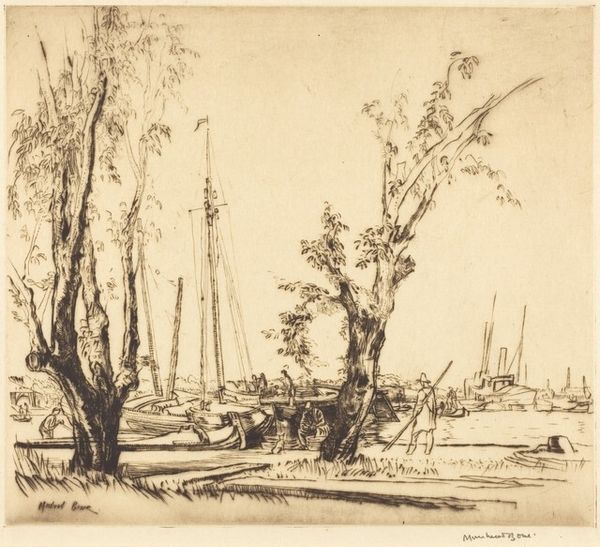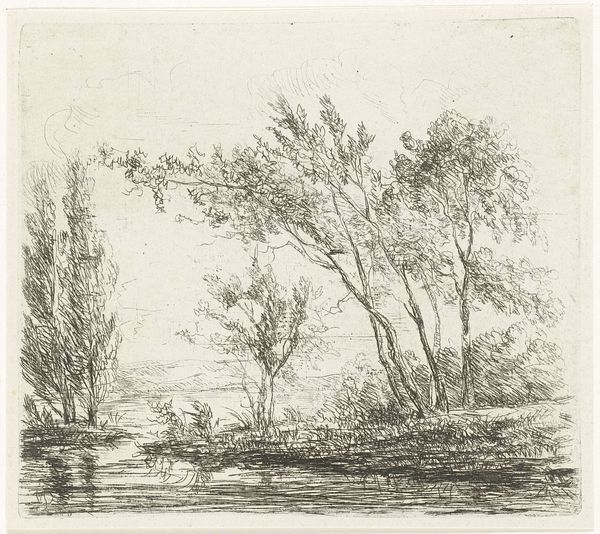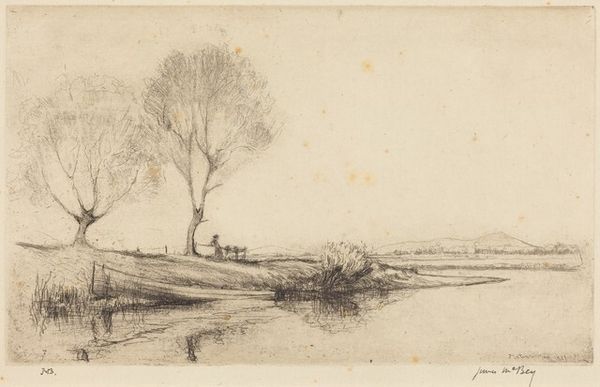
Copyright: National Gallery of Art: CC0 1.0
Curator: Immediately I’m drawn to the wistful stillness, the contemplative air of this sepia-toned etching. Editor: It certainly evokes a quieter time. We are looking at "Amsterdam from Ransdorp" by James McBey, created around 1910. An impressionistic cityscape rendered as a print. Curator: Windmills populate the distance. What would such symbols convey to McBey's audience? They stretch as an old, established motif within a scene otherwise undergoing industrial advancements. There is almost a conscious placement, the symbol adjacent to modern sprawl. Editor: It is compelling. And to contextualize further, McBey, though Scottish, often traveled and depicted scenes from continental Europe. Consider how Amsterdam, at this period, would have embodied a confluence of traditional Dutch identity with emerging modernity. Curator: A land suspended between past and future, represented, too, in the artistic method, no? The traditional art of etching employed to record, yet filtered through an Impressionistic style – an inherently modern eye and perspective. Editor: Precisely! Also, there's the scale to ponder: the composition is dominated by a looming dark tree, emphasizing a particular tension between foreground and what McBey wanted us to view behind. Note how the artist made this print a key piece in documenting Amsterdam's urban and economic transformations in the early 20th century. Curator: You're right. The framing device creates such potent symbolic space. The shadowed tree and what may lay under that thatch – hinting to secrets from the past – giving way, ever distantly, to the light of the city, the prospect of change, expansion, growth. All watched over, yes, by ever present sentinels. Editor: It's an engaging, almost dreamlike portrayal. And looking closer one wonders if that tension continues within our collective imagination – that conversation about embracing change in balance with what one risks losing of significance behind them. Thank you for this thoughtful reading! Curator: Indeed, I leave now with renewed pondering over how such symbols can resonate. Thank you for leading this consideration with insight.
Comments
No comments
Be the first to comment and join the conversation on the ultimate creative platform.
